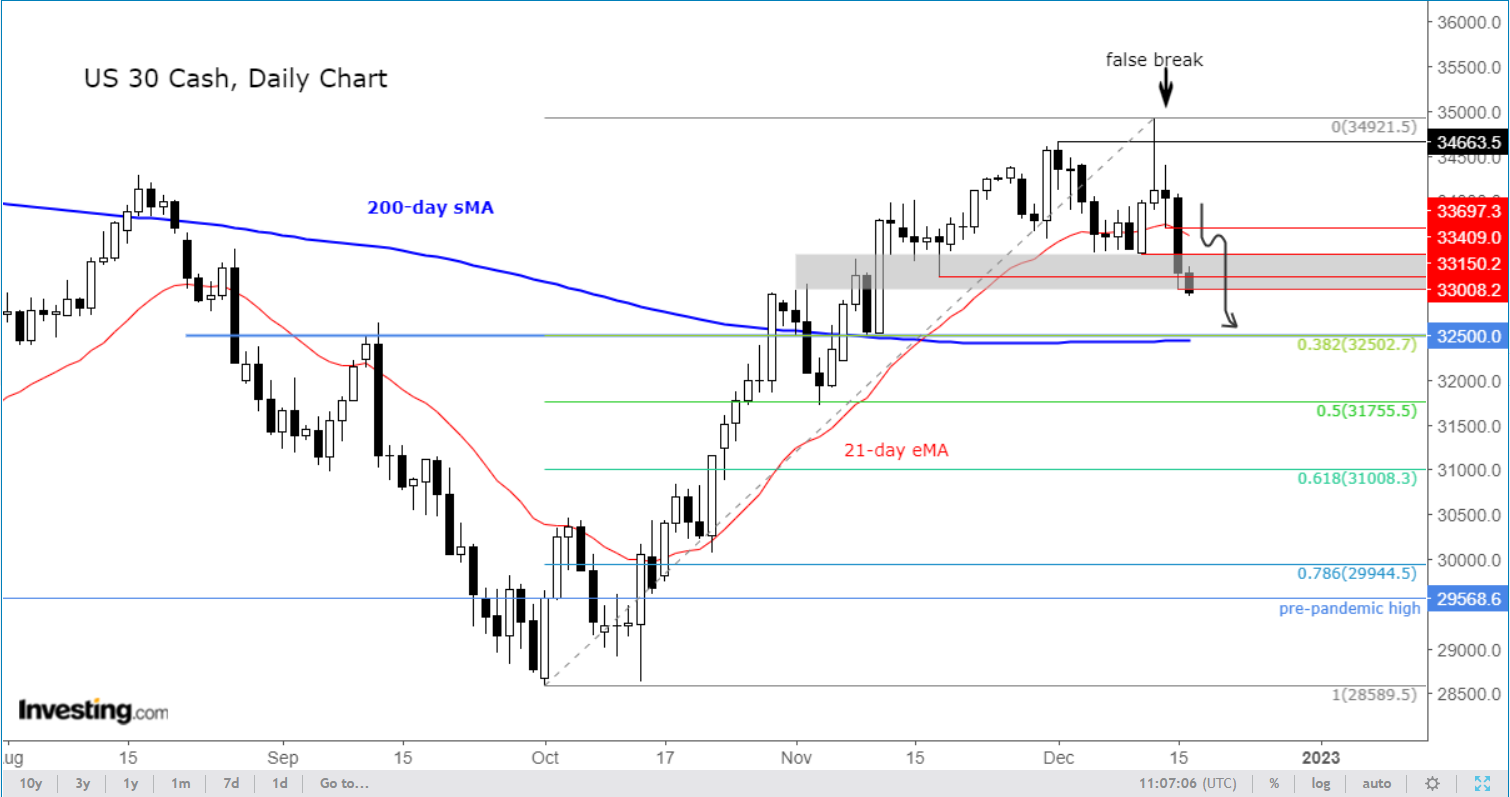- This week's sell-off has produced major technical damage to the S&P 500, the Dow, and the Nasdaq
- In the near term, US indexes appear somewhat oversold
- Still, the Dow could underperform moving forward as recession concerns hit the likes of energy, materials, and industrials
Investor sentiment remains downbeat. European markets extended their losses from the day before in early European trade, with Bitcoin, crude oil, and copper all falling.
US index futures also declined following Thursday's plunge. Though they appear a little oversold on the smaller time frames, which means a rebound cannot be ruled out, there's been a lot of technical damage on the higher time frames to expect a big recovery today. Still, let's keep an open mind and trade from one level to the next.
The latest stock market sell-off was triggered by the Fed and the ECB being more hawkish than had been expected this week. With interest rates now seen rising and remaining higher for longer, this has further increased worries about an already-weak global economy. Instead of a soft landing, there are fears that these central banks might create a hard landing in two of the world's largest trading blocs by signaling that their restrictive monetary policies are going to remain in place for longer than expected. The ECB President Christine Lagarde said they will keep raising interest rates at a 50 basis-point pace "for a period of time."
At the time of writing, there was still no end in sight in the stock market sell-off as we headed towards the start of the final day of the week for US investors and the final weeks of the year.
It is worth keeping a close eye on the major indices as a few key support levels are approaching, such as the 3840 level I had previously highlighted on the S&P 500 in this article. If the S&P 500 bounces there, it could lift the other indices. Still, the path of least resistance would remain to the downside for as long as the now-broken 3915 level holds as resistance.
Insofar as the Dow Jones Industrial Average is concerned, it still has a distance between where it was at the time of writing and the 200-day average at just below key support of around 32500.

Note that the S&P 500, Nasdaq, and Russell 2000 are all below their respective 200-day MAs. Clearly, the Dow has been outperforming in the recovery that started in October.
But in light of this week's breakdown, could the Dow underperform moving forward as recession concerns hit the likes of energy, materials, and industrials hard?
Regardless of how it performs relative to the other US indices, one thing is clear: they have all created bearish reversal signals. For the Dow, the reversal started when the index failed to hold above the previous high at 34663. This reversal was confirmed when it broke support at 44410.
So, the path of least resistance remains to the downside for the Dow until the charts tell us otherwise. Old support levels such as 33000, 33150, and 33410 are now the key resistance levels to watch, which could offer decent shorting opportunities if we get there.
As mentioned, the 200-day comes in just below support at 32500, which also happens to converge with the 38.2% Fibonacci retracement level against the October rally.
This is now the next immediate downside target for the bears. If we break this level decisively, then the 50% retracement could be the next downside objective at 31755.
Disclosure: The author does not own any of the securities mentioned in this article.
